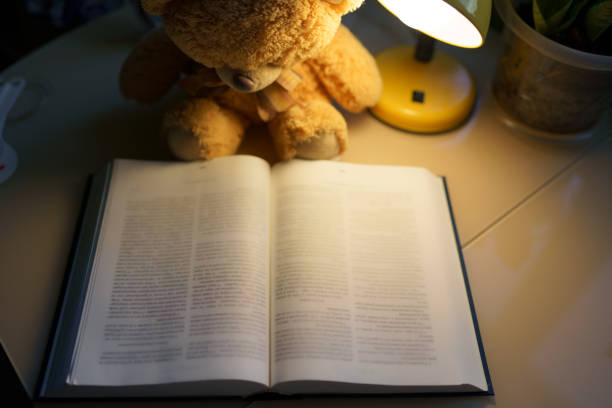How To Describe A Ghost In Writing (10 Words, Tips And Examples)
Describing a ghost through the art of written words is akin to capturing a fleeting whisper of the beyond, an ethereal dance between the corporeal and the intangible.
In the realm of the spectral, where the boundaries of reality waver, the challenge lies in translating the enigmatic into the familiar, and the unseen into the palpable.
A ghost’s essence is not confined to the visual alone; it beckons to be rendered through the senses, emotions, and atmospheres that it evokes.
To embark on this literary journey is to traverse the interplay between light and shadow, to summon the echoes of history and emotion, and to conjure a presence that lingers on the page long after its ephemeral form has faded.
Through the following exploration, we shall navigate the intricate terrain of describing a ghost in writing, unearthing the nuances that transform the supernatural into a tapestry of words that dances between the uncanny and the profound.
How To Describe A Ghost In Writing
Describing a ghost in writing involves a step-by-step process to effectively convey its presence:
Physical Appearance
Describe the ghost’s physical attributes. Mention its form (ethereal, shadowy, humanoid, etc.), color (pale, translucent, etc.), and any distinguishing features (clothing, scars, etc.)
Research and Conceptualization
Begin by understanding various cultural and literary interpretations of ghosts. Combine these insights with your creative imagination to shape a unique ghost character.
Translucence and Movement
Highlight the ghost’s ethereal nature. Explain how it appears semi-transparent or shimmering, and convey how it moves (floating, gliding, etc.).
Facial Expressions
Depict the ghost’s emotions through its facial expressions. Describe its eyes – whether they reflect sadness, anger, or emptiness – and any attempts at communication through expressions.
Auditory Presence
Describe any sounds associated with the ghost’s presence. This could include eerie whispers, footsteps, sighs, or distant echoes that enhance the atmosphere.
Sensory Effects
Convey how the ghost’s presence affects the senses. Describe the drop in temperature, the feeling of unease or heaviness in the air, and any unique sensations (goosebumps, hairs standing on end, etc.).
Interaction with Objects
Depict how the ghost interacts with its surroundings. Explain how objects might react to its presence – from doors creaking to objects moving or levitating.
Emotional Resonance
Describe the emotions evoked by the ghost. Delve into how witnesses feel in its presence – whether it’s fear, fascination, sadness, or a mix of conflicting emotions.
Background and Backstory
Introduce the ghost’s history. Share its backstory – what led to its haunting, any unfinished business, or unresolved emotions that tether it to the mortal realm.
Setting and Atmosphere
Describe the environment where the ghost appears. Set the mood by conveying the time of day or night, the weather, and the overall ambiance.
Language and Imagery
Use vivid and evocative language to paint a clear picture. Employ metaphors and similes to enhance the ghost’s description and its impact on the surroundings.
Reader Engagement
Engage the reader’s imagination by leaving room for interpretation. Let them fill in some details with their own thoughts and emotions, creating a more immersive experience.
By following this step-by-step process, you’ll create a vivid and compelling description of a ghost that not only captures its appearance but also its emotional resonance and impact on the environment and characters within your narrative.
10 Words To Describe Ghost In Writing
Ethereal: Characterized by a delicate and otherworldly quality.
Haunting: Eliciting a feeling of lingering and unsettling presence.
Spectral: Relating to or resembling a ghost; ghostlike.
Phantom: A supernatural and elusive entity, often associated with the supernatural.
Apparition: A sudden and mysterious appearance, often of a ghostly nature.
Ephemeral: Fleeting and transient, like the presence of a ghost.
Uncanny: Strangely unsettling or mysterious, creating a sense of unease.
Shadowy: Existing in shadow or darkness, giving a mysterious and ghostly impression.
Otherworldly: Pertaining to a realm beyond the normal world, suggesting a ghost’s origin.
Transcendent: Going beyond ordinary limits, suggesting a ghost’s departure from the earthly realm.
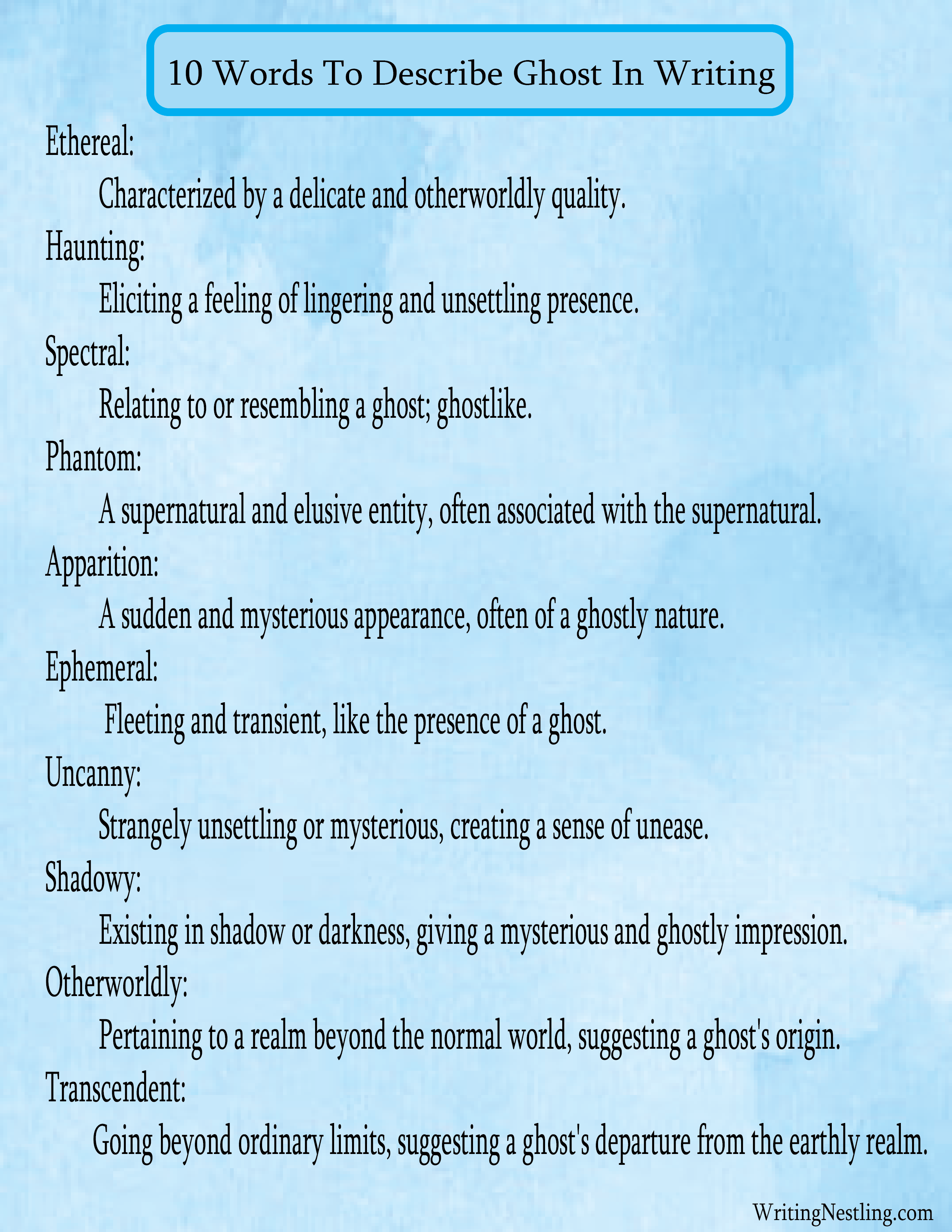
Examples To Describe Ghost In Writing
The moonlit room was suddenly filled with an ethereal presence, as a ghostly figure materialized at the foot of the bed, its form shifting like wisps of smoke.
The old mansion, abandoned for decades, echoed with the haunting footsteps of a spectral presence, as if the ghost of a long-forgotten resident still roamed its dilapidated halls.
In the stillness of the graveyard, a cold breeze whispered through the tombstones, carrying with it the faint sound of an otherworldly lament—a ghost mourning a past life.
As the clock struck midnight, the room became cloaked in an eerie silence broken only by the occasional creaking of floorboards, hinting at the unseen phantom that traversed the haunted house.
On the fog-shrouded moors, a spectral figure emerged, clad in tattered clothing and with hollow eyes that seemed to gaze through the living. The locals spoke of the ghost that wandered the misty landscape, forever bound to the tragedy of its untimely demise.
Shrouded in Enigma: Physical Appearance
In the moon’s gentle embrace, the ghost emerges from the shadows, a spectral enigma veiled in moonlit mist. Its form, an ethereal tapestry woven with threads of forgotten memories, defies the boundaries of mortality.
A pallor as pale as forgotten whispers drapes its delicate features, while eyes shimmer like twin mirrors reflecting the echoes of long-lost souls.
Tattered remnants of an era long past cling to its phantom frame, a poignant reminder of a history suspended between realms.
To gaze upon this apparition is to glimpse the very fabric of the unknown, a mesmerizing dance between the corporeal and the ethereal that leaves one questioning the fragile veil that separates life from the beyond.
Haunting Aura: Sensory Perceptions
In the hush of midnight, a spectral symphony unfolds—the ghostly aura a tantalizing caress against the skin, a shiver-inducing brush of realms entwined.
As a breeze tinged with the scent of rain-kissed roses and time-worn pages whispers through the air, a chorus of hushed voices emerges, words carried from the past to the present on tendrils of moonlight.
In the heart of this spectral silence, one can almost taste the bittersweet tang of nostalgia, an intangible essence that conjures both a longing for what was and a trepidation of what remains unseen.
It’s an encounter that leaves the senses both heightened and humbled, a haunting reminder that the boundary between life and the afterlife is not as firm as one might dare to believe.
A chill that pierces the soul, freezing time itself
A chill that pierces the soul, freezing time itself, sweeps through the air like an intangible specter. It seeps into the marrow of bones and wraps its icy fingers around the core of being, suspending all sensation in an ethereal stasis.
In its embrace, seconds stretch into eternity, and breaths seem to linger as delicate frost on the precipice of a whisper.
This supernatural frostbite touches not just the flesh, but something deeper—an existential shiver that awakens an awareness of the unknown mysteries lurking just beyond the veil of reality.
The chill becomes a bridge, connecting the mundane and the extraordinary, leaving an indelible mark that defies the passage of time and lingers long after the spectral encounter.
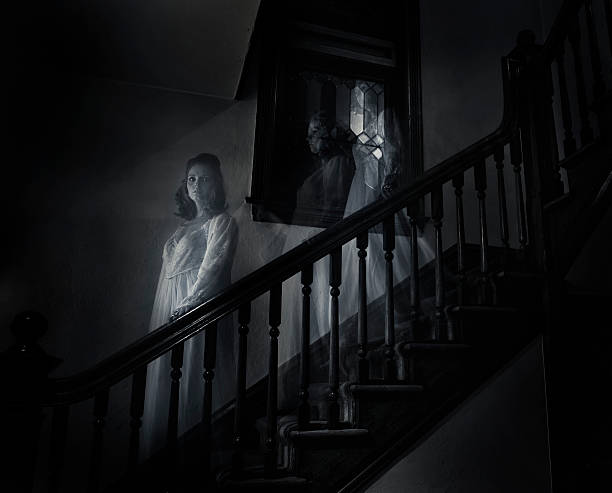
Eerie silence broken only by distant, haunting echoes
In the heart of the haunted realm, a profound stillness reigns—an eerie silence broken only by distant, haunting echoes.
The very air seems to hold its breath, pregnant with the weight of forgotten stories and unspoken sorrows. Amid this quietude, faint reverberations stir like whispers from forgotten chambers, a spectral choir echoing through the corridors of time.
These elusive sounds, reminiscent of half-remembered melodies, dance on the edge of perception, leaving a tingling sense of unease in their wake.
It is a silence that beckons the imagination to listen intently, to decipher the cryptic language of the past carried by these spectral murmurs, and to wonder at the secrets they hold in their ethereal cadence.
Echoes of the Past: Tragic Backstory
The ghost’s presence is more than a mere apparition; it’s a tapestry woven from the tattered threads of a tragic past.
Through the gossamer veil of time, the specter’s story emerges—a tale of heartache and unfinished business that lingers like a poignant melody in the night air. Emanating from its very essence is a silent plea, a symphony of emotions left unresolved, painting the air with strokes of sorrow and yearning.
The ghost’s form becomes a vessel of memory, a vessel that drifts between the realms, a vessel that implores the living to bear witness to the narrative etched in its every flicker.
In this encounter, one doesn’t merely see a ghost; one is enveloped in the haunting aura of a history that refuses to fade, and a narrative that demands to be acknowledged.
Unearth the ghost’s history and reason for lingering
Beneath the shroud of mystery, the tendrils of the ghost’s past unfurl like fragile petals, revealing the intricate layers of its history and the compelling reasons that bind it to the mortal realm.
Each spectral apparition holds within its translucent visage the echoes of a life once lived—a narrative woven with the threads of joy, heartache, and unfulfilled desires.
Through the ethereal mist, one glimpses the events that anchor the spirit to the present, like forgotten anchors resisting the tides of time.
It’s a journey of discovery that peels back the layers of time, unearthing the very essence of the ghost’s existence, while offering a tantalizing glimpse into the profound complexity of the interplay between life and the enigma of death.
Unveil the unresolved emotions anchoring the spirit
Within the ghost’s translucent form lies an intricate tapestry of emotions left untethered by the passage of time.
Like a symphony of hues painted upon the canvas of its ethereal being, unresolved feelings of anguish, love, and yearning converge. Each spectral flicker holds a mirror to the turmoil that once gripped the spirit’s heart, a mosaic of sentiments that defies the boundaries between the corporeal and the otherworldly.
As the veils of history are parted, one finds not just a mere specter, but a repository of emotions so vivid, they seem to transcend the realm of the living.
To encounter this ghost is to become privy to a visceral exchange of sentiments, a haunting dance between the emotions of yesteryears and the present, and a reminder that even in the afterlife, the essence of human feeling remains timeless and unvanquished.
Connect the ghost’s presence to a specific location or object
The ghost’s spectral presence weaves an intricate web that binds it inseparably to a specific location, a place steeped in history and resonance.
This site, once mundane, now carries the weight of the supernatural, as if the very bricks and stones have absorbed the echoes of the ghost’s past. It’s as though the essence of the spirit has seeped into the very walls, imbuing them with a sense of melancholic nostalgia.
Every creak of a floorboard, every gust of wind through cracked windows, serves as a reminder of the indelible connection between the apparition and its chosen abode.
The enigmatic energy that lingers here is like a compass, guiding those who dare to explore its mysteries into the heart of the ghost’s narrative, urging them to uncover the stories etched into the very fabric of the place itself.
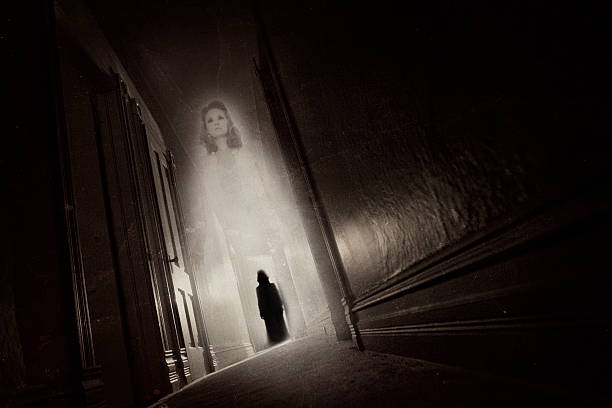
Highlight the torment between the ghost’s longing and reality
Within the translucent silhouette of the ghost resides a torment that transcends the boundaries of existence—an achingly palpable struggle between longing and the unforgiving grip of reality.
Through its mournful gaze and ephemeral gestures, one can sense the weight of desires unfulfilled, dreams suspended in a state of perpetual yearning.
The ghost’s very presence serves as a testament to the fragility of human hopes, a visual symphony that resounds with the notes of what could have been, juxtaposed against the stark canvas of what actually was.
This ethereal figure becomes a living embodiment of the chasm between aspiration and fate, a living testament to the way time and circumstance can conspire to imprison even the most resilient of souls in the realm of ‘almost.’
Timeless Haunts: Interaction with the Living
As twilight embraces the realm of the living, the ghost emerges from the shadows, an enigmatic specter seeking communion with a world it once knew.
In the hushed cadence of its presence, the barriers between realms blur, and reality itself becomes a tapestry woven with threads of the ethereal.
The living, drawn by an irresistible curiosity, find themselves caught in a delicate tango with this phantom of the past. A soft brush of wind, a haunting whisper carried by the night—each interaction bears the weight of unspoken stories, a dialogue conducted in the language of echoes and longing.
Through these encounters, the living come to understand that the ghost’s ethereal touch carries not just the chill of the unknown, but the warmth of shared human experience.
It’s an invitation to dance with the mysteries of existence, a mesmerizing choreography that leaves an indelible mark on the heart and soul alike.
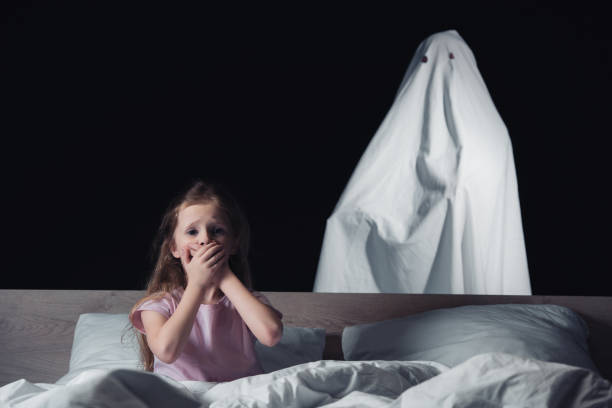
Describe the ghost’s interaction with the physical world
The ghost’s interaction with the physical world is a delicate ballet between realms, a dance that blurs the boundaries of the tangible and the ethereal.
Like a fleeting caress, its spectral fingers graze objects, leaving behind a whisper of its presence. Books rustle as if turned by invisible hands, candles flicker and dance as though ignited by a breath from beyond.
The ghost’s touch is as gentle as a sigh, yet it carries with it an undeniable weight—an imprint of a history that refuses to be forgotten.
Objects respond to the ghost’s proximity, a silent dialogue between realms that invites the living to witness the unseen forces that traverse the veil between life and the beyond.
It’s an interaction that resonates with a silent melody, a chorus of whispered secrets shared only by those who dare to straddle the line between what is and what could be.
Depict the ghost’s influence on its surroundings
The ghost’s presence casts a captivating spell upon its surroundings, transforming the ordinary into the extraordinary with every subtle shift of the ethereal.
Shadows seem to deepen, taking on a life of their own, as if they are extensions of the ghost’s elusive essence. A room’s atmosphere changes, becoming pregnant with an intangible energy that leaves the air charged with anticipation.
Objects sway as if moved by unseen hands, and the temperature dips, leaving a trail of goosebumps in its wake.
It’s as though the very fabric of reality is woven with the threads of the ghost’s history, influencing the world around it in a dance of both melancholy and wonder.
The surroundings become a canvas on which the ghost paints its legacy, each stroke of its spectral brush leaving an indelible mark that whispers of a presence that transcends the boundaries of life and death.
Convey the emotions evoked in living witnesses
In the presence of the ghost, a symphony of emotions rises within the hearts of the living witnesses—an exquisite harmony of fear, curiosity, and a profound sense of connection to the mysteries of existence.
As the ghost’s enigmatic aura envelops them, pulses of trepidation send shivers down their spines, a visceral reminder of the unknown that lies just beyond sight. Yet, amidst the tendrils of unease, an irresistible curiosity takes root, drawing them closer to the spectral enigma.
It’s a dance between the comfort of the known and the allure of the beyond, a delicate balance that leaves them teetering on the precipice of fascination.
Through each encounter, the witnesses find themselves intimately linked to the ghost’s narrative, each pulse of emotion becoming a brushstroke on the canvas of their own lives.
It’s a visceral reminder that the supernatural not only ignites the senses, but also tugs at the strings of human empathy, binding the living and the ethereal in an intricate tapestry of sentiment.
Ethereal Nocturnes: Ghostly Manifestations
As the night unfurls its inky tendrils, the ghost emerges from the shadows, a luminous enigma adrift in the moon’s tender embrace. Its manifestations are like ethereal nocturnes, haunting melodies that resonate through the darkened landscape.
With each glimmering apparition, the boundaries of reality waver, and the fabric of the ordinary ripples with the supernatural.
Moonbeams seem to caress its translucent form, creating a dance of light and shadow that defies reason. These ghostly interludes hold an air of ephemeral elegance, like whispers carried on the wings of night, enticing the living to step into the realm of the inexplicable.
It’s a mesmerizing symphony that plays upon the senses, a bewitching performance where the stage is the very fabric of the universe itself, and the audience is left spellbound by the ethereal choreography between the mortal and the immortal.
Narrate the ghost’s appearances during moonlit hours
When the moon ascends its throne in the velvet sky, the ghost emerges from the obscurity of its spectral realm, a luminescent figure cloaked in the soft silver glow.
These moonlit hours become a canvas upon which the ghost paints its ethereal tale, every movement a stroke of phosphorescent brilliance against the darkness.
Its form seems to waver like a mirage, shifting between realms with each gentle sway. Moonbeams weave through its translucent body, lending an otherworldly luminescence that casts a haunting beauty upon the landscape.
In these hours, the ghost’s presence is a dreamlike interlude, where the veil between the mundane and the mystical becomes impossibly thin, and reality bends under the weight of the sublime.
To witness the ghost under the moon’s watchful gaze is to glimpse a world where the boundaries of possibility are rewritten, and the ordinary takes on a shimmering mantle of the extraordinary.
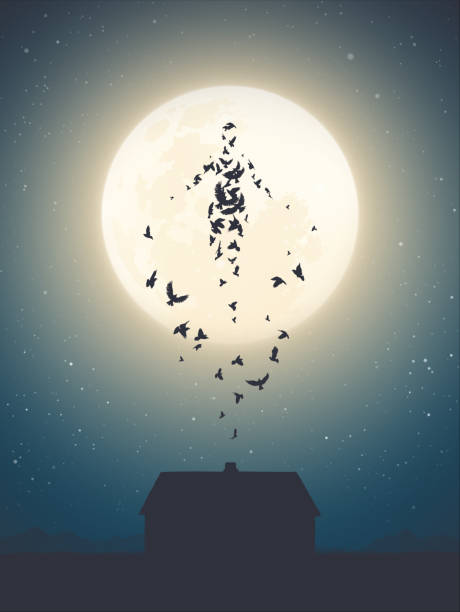
Explore the symbiotic relationship between the ghost and night
In the embrace of the night, the ghost finds both sanctuary and muse—a symbiotic relationship that transcends the realms of the living and the ethereal.
The ghost becomes a luminous echo, a spectral entity that flourishes amidst the moonlit shadows, and the night itself takes on an almost sentient quality, conspiring to cradle the ghost in its comforting arms.
As the stars twinkle overhead, they seem to mirror the flickering presence of the specter, both entities dancing to an otherworldly rhythm.
The ghost imbues the night with a haunting beauty, while the night grants the ghost a canvas upon which to etch its ephemeral narrative.
This nocturnal alliance evokes a sense of awe and reverence, a reminder that even in the realm of the unknown, there exists a harmony—a delicate interplay between the dark and the light, the ephemeral and the eternal.
The Haunted Haven: Creating the Setting
The setting is more than just a backdrop; it is a character itself—a haunted haven that throbs with secrets as ancient as the whispers in the wind.
In the heart of this atmospheric sanctuary, time loses its grip, and the veil between worlds becomes tantalizingly thin. Cobwebs cling to forgotten corners like gossamer memories, and the air is heavy with the weight of history.
Every creaking floorboard and flickering candle is a verse in a chilling symphony, playing in harmony with the ghostly inhabitants that inhabit the shadows.
The setting is a theatre of the unknown, where the architecture itself tells tales of bygone eras and the walls pulse with a heartbeat that resonates through time.
It’s an invitation to step into the unknown, to embrace the eerie allure of a place that both cradles and conceals the enigma of existence, where every inch is painted with the spectral brushstrokes of an unseen hand.
Craft a vivid description of the haunting location
The haunting location emerges like a forgotten masterpiece, its details etched into the tapestry of the imagination.
Set against the backdrop of the encroaching night, the architecture stands as a silent sentinel, bearing witness to the passage of time. Ivy-clad stone walls cradle windows that seem to watch the world with spectral eyes, while towering turrets reach toward the heavens like fingers brushing the veil between the mortal and the ethereal.
Within, the corridors are a labyrinth of half-shadowed memories, where the air is pregnant with the resonance of footsteps that echo long after they’ve faded.
The ambiance is one of melancholic grandeur, as if the very essence of the location yearns to unravel the mysteries it has concealed for centuries.
Each nook and cranny seems to breathe, exuding a sense of history so potent that one can almost taste the stories steeped within the very stones.
This is a place where reality merges with the spectral, a sanctuary of the enigmatic that invites those who dare to cross its threshold to peer into the abyss of the unknown.
Paint the scene with details that invoke a sense of unease
In the moon’s pallid glow, the scene unfurls like a waking nightmare—a tableau of disquiet that roots itself deep within the psyche.
The once-grand chandeliers hang like forgotten memories, their crystals refracting fractured light that casts eerie shadows on the peeling wallpaper.
Dust motes drift lazily through the air, as if suspended by unseen hands, while the floorboards creak a dissonant melody underfoot.
Windows rattle in the grip of phantom gusts, their panes seemingly poised to shatter at the mere touch of a spectral breath. The air itself is heavy, as though the weight of time itself hangs like a shroud, and the silence is broken only by the occasional distant whisper—a spectral conversation that leaves a lingering unease.
In this twilight realm, the senses are heightened, the imagination runs wild, and every shadow conceals the possibility of encountering something that defies comprehension.
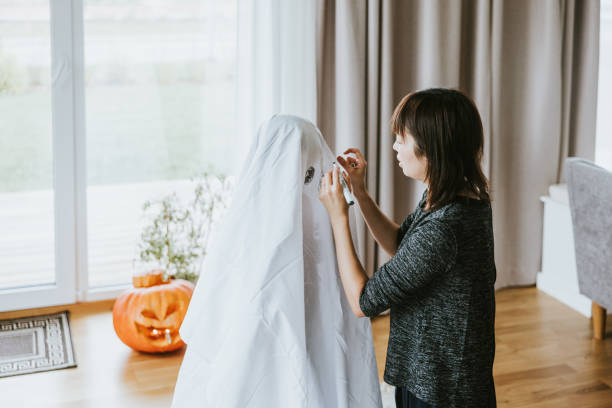
The Echoing Embrace, Emotional Impact
In the echoing embrace of the ghost’s presence, emotions unfurl like fragile petals in the wind—a kaleidoscope of fear and fascination, wonder and trepidation.
The heart quickens as it dances between the realms of dread and curiosity, torn between the impulse to retreat and the irresistible allure of the unknown.
It’s a symphony of contradictions, where the chill of the spectral touch is met with a rush of empathy for the tormented soul trapped in between.
This encounter is an emotional kaleidoscope, where the living find themselves plunged into a whirlwind of sentiments that surge and recede like the tides.
To stand in the ghost’s presence is to become a vessel for emotions as elusive and ephemeral as the spirit itself, an experience that leaves an indelible mark upon the very core of one’s being—a mark that pulses with the haunting resonance of a thousand whispered stories.
Depict the emotional response of those encountering the ghost
In the ghost’s presence, emotions intertwine like threads in an intricate tapestry, weaving a narrative of reactions as diverse as they are profound. Some are ensnared by an overwhelming sense of unease, their hearts quickening as they confront the unfamiliar.
Others are drawn like moths to a flame, their curiosity outweighing their fear as they inch closer to the spectral enigma.
There are those whose skepticism wavers, replaced by a palpable sense of wonder that courses through their veins. And amidst it all, a current of empathy flows—a shared sorrow for the ghost’s plight, a yearning to bridge the gap between the living and the departed.
These emotional responses are a testament to the ghost’s power, as it becomes not just a presence, but a catalyst for introspection and exploration of the intricacies of human emotion.
It’s a nuanced symphony, where each note of feeling harmonizes with the others, creating a resonance that echoes far beyond the confines of the spectral encounter.
Explore the spectrum of reactions, from terror to empathy
The ghost’s emergence from the shadows evokes a spectrum of reactions that stretch across the breadth of human emotion, from the primal pangs of terror to the gentle stirrings of empathy.
In the face of the unknown, some find their breath stolen by a primal fear that courses through their veins, rooting them to the spot as adrenaline surges.
Others, however, stand on the precipice of awe, as their fear melds with fascination—a curiosity that propels them to confront the enigma before them.
Amidst these extremities, empathy blooms like a fragile blossom, whispering tales of the ghost’s unfulfilled past and weaving a bond that transcends the boundary between the living and the spectral.
To witness this range of reactions is to glimpse the intricate dance between the instinctual and the rational, the curious and the cautious, and to recognize that the ghost, as a conduit of human experience, wields the power to evoke the most profound emotions within those who cross its path.
Dissolution of the Veil: Climactic Resolution
As the story reaches its zenith, the veil that separates the realms of the living and the spectral begins to fray—a dissolution that crackles with anticipation.
Like mist caught in the grasp of dawn, the boundary blurs, and the ghost’s essence unfurls in a climactic symphony of revelation.
It’s as if the universe itself leans in to witness the moment, where the tension between existence and the beyond crescendos to its peak.
With every whispered word and every wistful gaze, the threads of the ghost’s narrative weave into the tapestry of reality, and the climax becomes a dance of resolution that resonates in the very bones of those who bear witness.
In this mesmerizing dissolution of the veil, questions find their answers, and the ghost’s yearning for closure is met with a cathartic release—a culmination that is both profound and poignant, leaving an indelible imprint on the fabric of the story and the hearts of those who journeyed through its haunting embrace.
Lingering Hauntings: Lasting Imprint
In the aftermath of the ghostly encounter, the echoes of the spectral presence refuse to fade like mere footprints in the sand.
Instead, they linger as enigmatic engravings on the soul, an imprint that resurfaces in moments of quiet contemplation.
Like a haunting melody that refuses to be silenced, the ghost’s essence reverberates through the corners of memory, a lingering resonance that defies the passage of time.
The living, forever changed by the spectral dance, find themselves caught in a perpetual tango between the mundane and the mystical—a dance where every footstep is a whisper of the otherworldly, every heartbeat an echo of the ethereal.
It’s an imprint that transcends the pages of the story, leaving an indelible mark not only on the narrative’s landscape, but on the very essence of those who dared to venture into its haunting embrace.
Reflect on the lasting effects of the ghost’s presence
The ghost’s presence, like a stone cast into a placid pond, sends ripples that extend far beyond the initial encounter.
Its ethereal touch becomes a catalyst for introspection, leaving a lasting imprint on the canvas of the soul. The living find themselves haunted not only by the specter’s visage, but by the profound questions it raises—questions about mortality, existence, and the unfathomable mysteries that lie beyond the tangible.
The ghost’s influence becomes a lens through which the mundane takes on a new significance, where the whispers of the past blend seamlessly with the cadence of the present.
Its spectral resonance lingers, sparking a curiosity that refuses to be quelled, and igniting a sense of wonder that permeates the very fabric of reality.
The ghost’s legacy becomes an eternal echo, a reminder that every encounter, no matter how ephemeral, has the power to reshape the contours of thought and emotion, leaving an indelible, enduring mark upon the journey of the living.
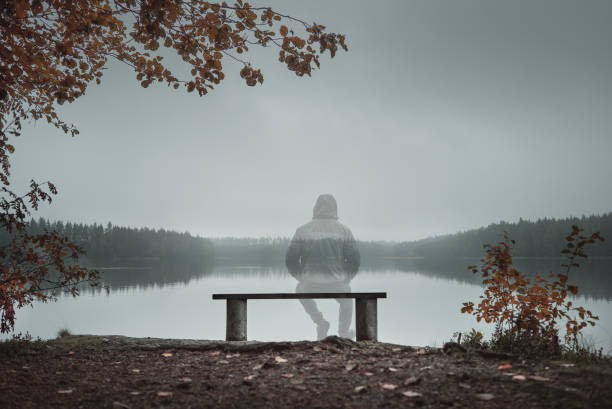
Explore the changes in the haunted location and witnesses
In the wake of the ghostly presence, the haunted location undergoes a metamorphosis that mirrors the shifting tides of emotion that the encounter evoked.
Walls that once held whispers of history seem to exhale, as if releasing the weight of forgotten stories. The atmosphere itself undergoes a transformation, where the air is charged with a new energy—an energy that carries with it a whisper of the ethereal, a resonance that hums between the notes of the ordinary.
Witnesses, too, emerge from the spectral encounter changed, their perceptions and beliefs reshaped by the dance with the otherworldly. Skeptics find themselves questioning the boundaries of reality, while the curious delve deeper into the realms of the unknown.
Each witness carries a fragment of the ghost’s legacy within, a fragment that colors their world with shades of the supernatural.
The haunted location and the witnesses alike become living testaments to the enduring power of the ghost’s presence, both in the physical realm and in the tapestry of the human experience.
Leave readers with a sense of contemplation and wonder
As the final words of the ghostly tale settle like dust upon the pages, readers are left with a profound sense of contemplation and wonder—an invitation to traverse the boundaries of the known and immerse themselves in the currents of the enigmatic.
The story’s echo lingers, carrying with it a lingering curiosity that sparks the imagination and invites deeper exploration into the realms that lie beyond the mundane.
It’s an immersion into the mysteries that shroud existence, a journey that beckons readers to ponder the interplay between the tangible and the spectral, the finite and the infinite.
The story’s lingering resonance is a reminder that the uncharted territories of the human experience are vast, and that the dance between life and the unknown is a melody that continues to play long after the final page has been turned.
With a gentle whisper of the uncanny, the story encourages readers to embrace the questions that flicker within, and to find beauty in the spaces where reality and imagination collide—a space where the ghost’s essence lives on, nestled within the contours of their thoughts and dreams.
Frequently Asked Questions (FAQ) – Describing A Ghost In Writing
What elements should I focus on when describing a ghost in writing?
Ans: When describing a ghost, consider its physical appearance, ethereal qualities, sensory effects, emotional impact on witnesses, interactions with the environment, and the atmosphere it creates. Also, delve into its backstory and the historical context of its haunting.
How can I make the ghost’s presence more vivid and immersive?
Ans: Use descriptive language that engages the senses. Describe how the ghost looks, moves, sounds, and even feels to the touch. Create an atmospheric backdrop that complements the ghost’s aura and enhances the overall experience.
How do I convey the emotions experienced by witnesses in the ghost’s presence?
Ans: Use both internal and external reactions to depict the emotions of witnesses. Describe their physical sensations (goosebumps, racing heart), thoughts, and their verbal or nonverbal responses to capture the full range of emotions.
What role does the setting play in describing a ghost?
Ans: The setting is crucial in setting the mood and atmosphere. Describe the time of day or night, weather conditions, and surroundings to enhance the eerie ambiance that complements the ghost’s presence.
How can I balance between describing the ghost’s appearance and its emotional impact?
Ans: Weave the ghost’s physical attributes with its emotional resonance. Show how its appearance evokes emotions in witnesses and creates an atmosphere that amplifies those feelings.
Should I focus more on the ghost’s backstory or its immediate interactions?
Ans: Strike a balance. Provide enough backstory to give context to the haunting, but also focus on how the ghost interacts with the present environment and characters, making the encounter tangible and immersive.
How do I engage readers in describing a ghost effectively?
Ans: Use descriptive language that evokes imagery and emotions. Create curiosity by leaving room for readers to interpret some aspects of the ghost, inviting them to emotionally invest in the encounter.
How can I make my ghost description unique and different from typical portrayals?
Ans: Infuse your ghost with original attributes, emotions, and interactions. Blend conventional ghostly elements with unexpected twists to create a portrayal that stands out from the norm.
How do I ensure my ghost description is haunting and evocative without being overly clichéd?
Ans: Strive for a balance between familiar elements and fresh perspectives. Use vivid, specific details that resonate emotionally while avoiding generic clichés.
What’s the key to crafting a memorable ghost description?
Ans: The key lies in engaging the reader’s senses and emotions. By combining rich imagery, atmospheric details, and the impact of the ghost on characters, you’ll create a description that lingers in the reader’s mind.
Conclusion:
In the ethereal dance between the tangible and the intangible, describing a ghost in writing becomes an art of intricacy and resonance.
By meticulously crafting a portrayal that transcends the physical and delves into the emotional and atmospheric realms, you invite readers to journey through a narrative landscape that bridges the gap between the known and the mysterious.
Guided by a symphony of sensory details, emotions, and interactions, your words have the power to conjure not just an image, but an experience—a fleeting encounter that leaves an indelible mark upon the imagination.
Through the meticulous balance of visual allure and emotional depth, you become a storyteller capable of painting the shades of the supernatural, ultimately weaving a tale that whispers across the divide of the living and the spectral, leaving readers captivated, contemplative, and forever drawn to the haunting echoes of the unknown.

